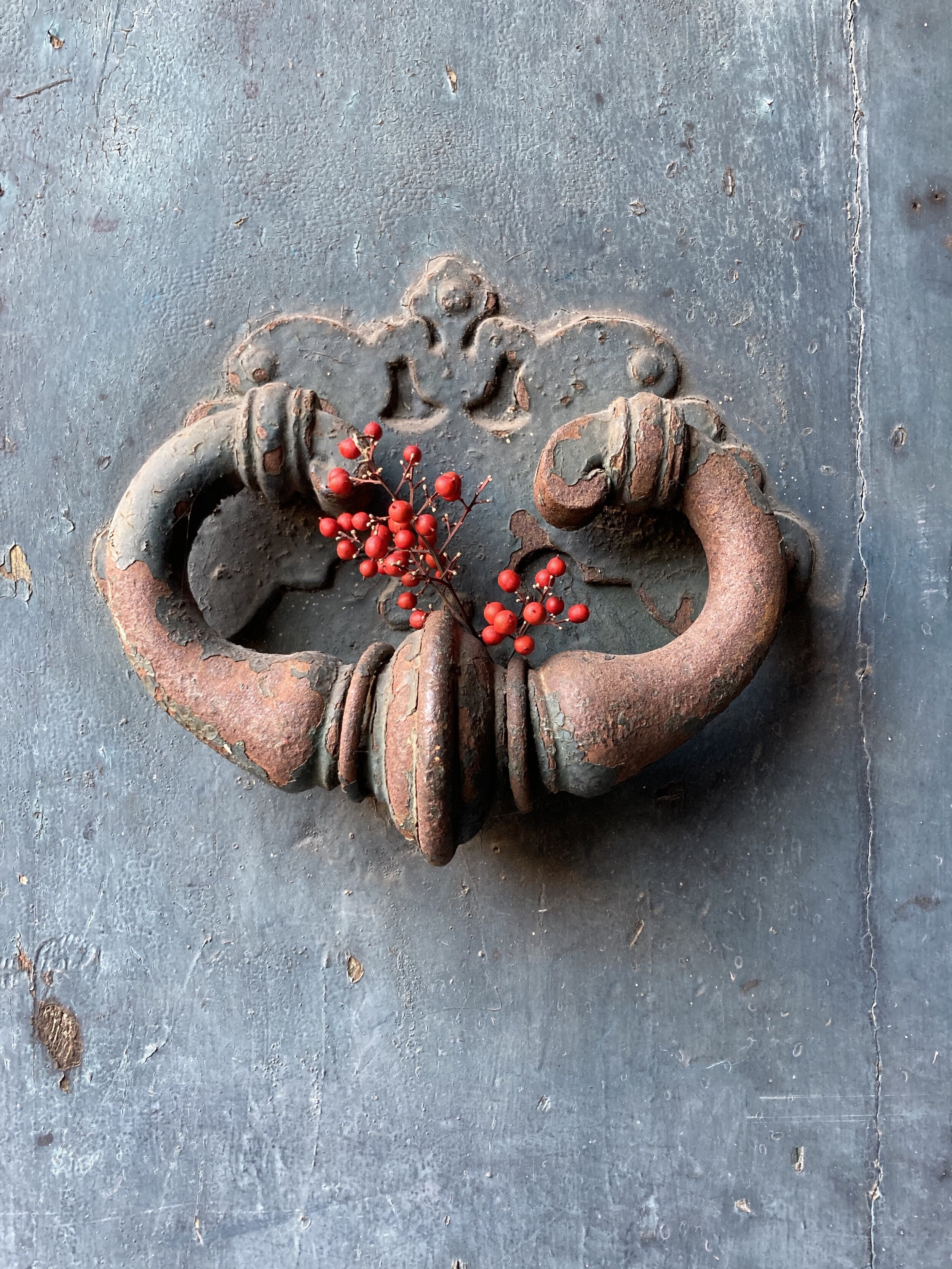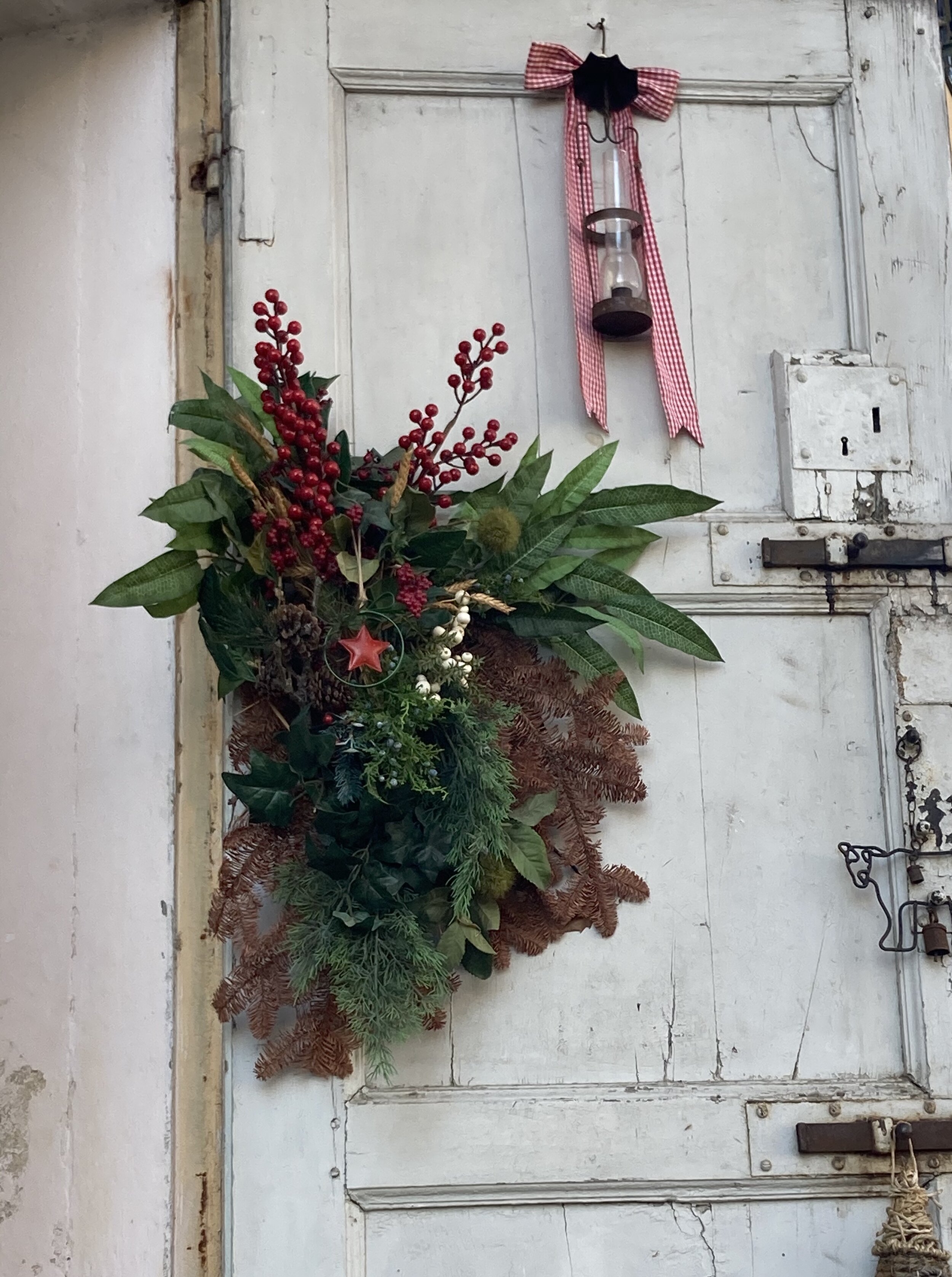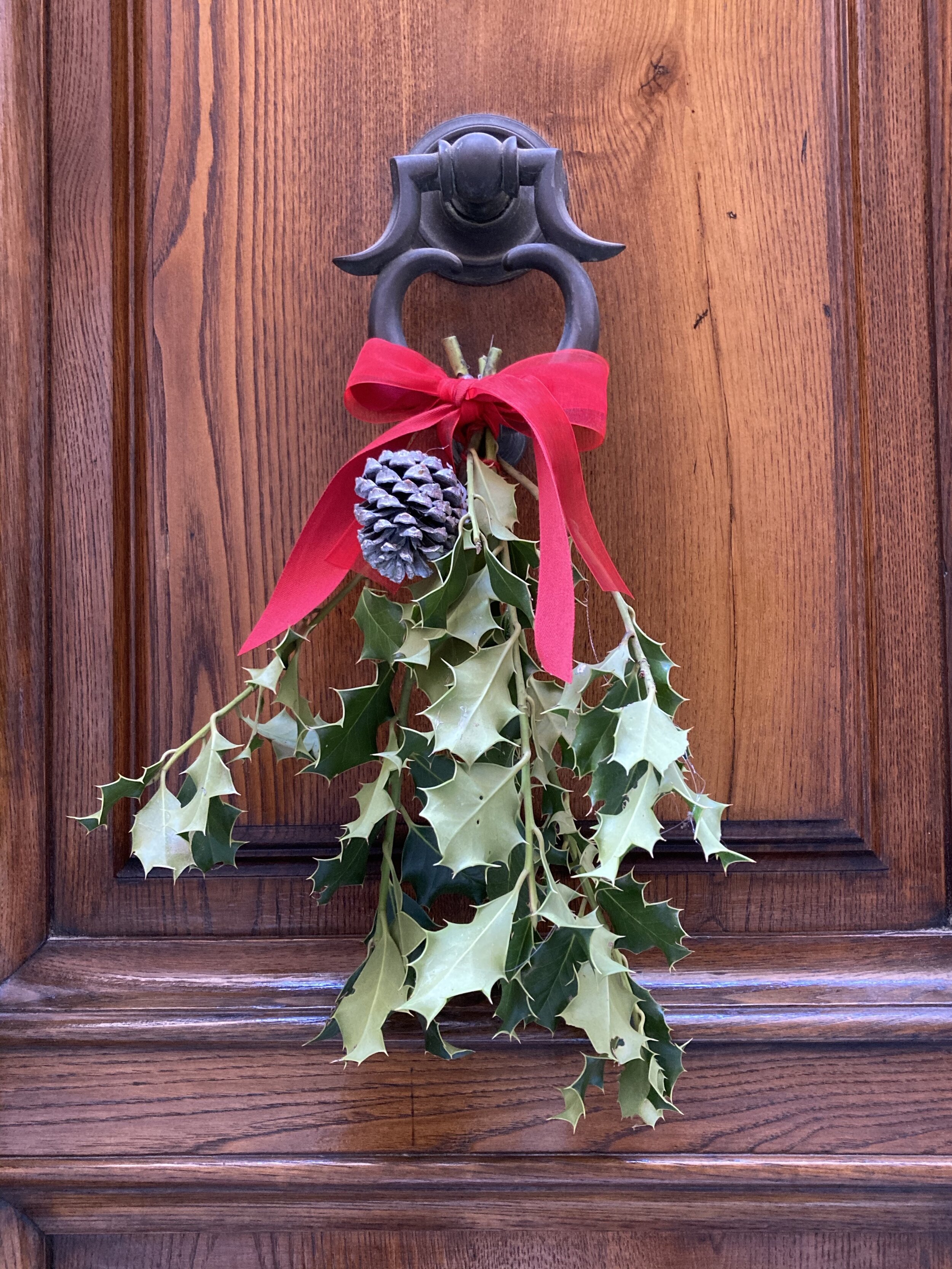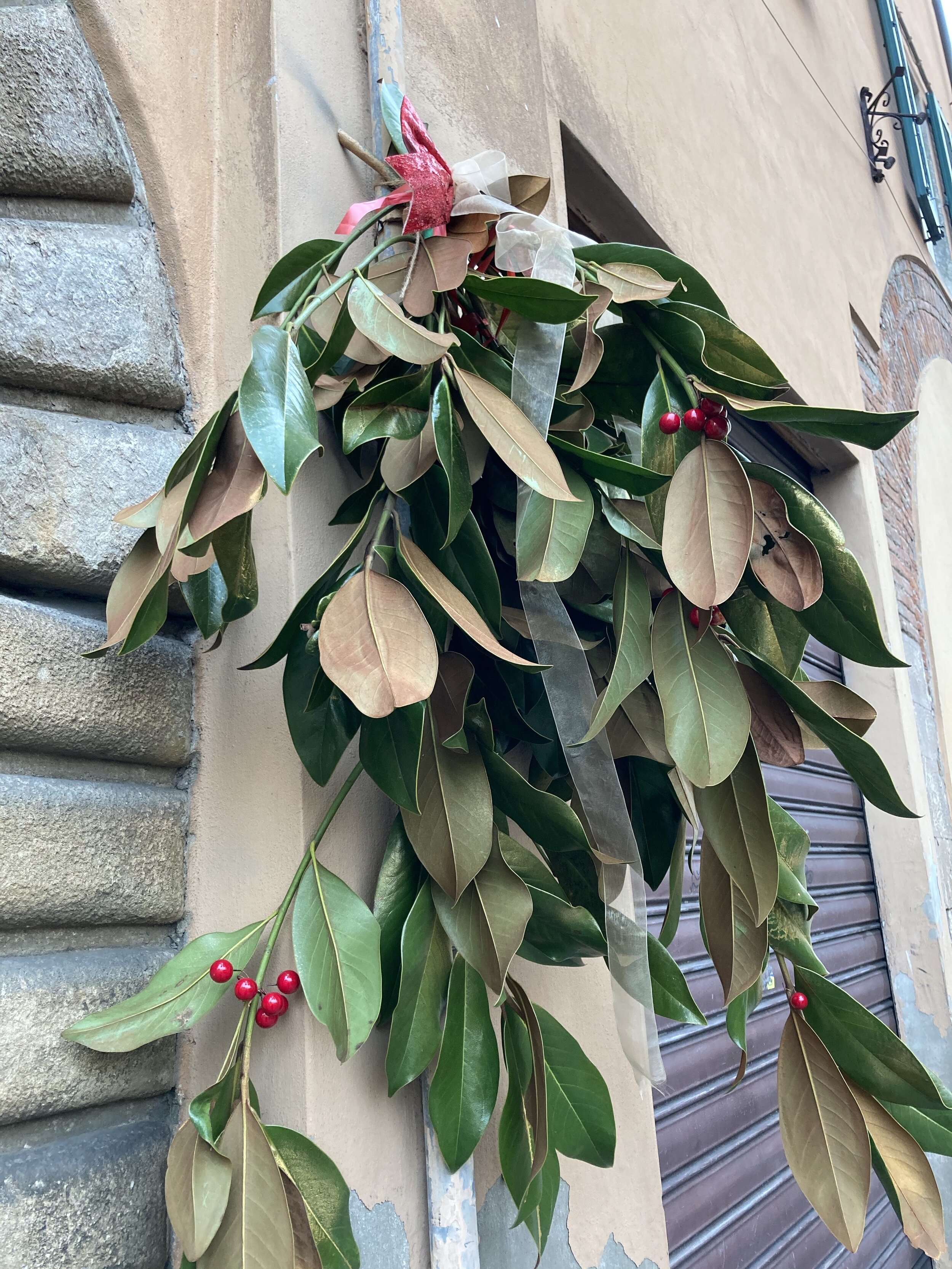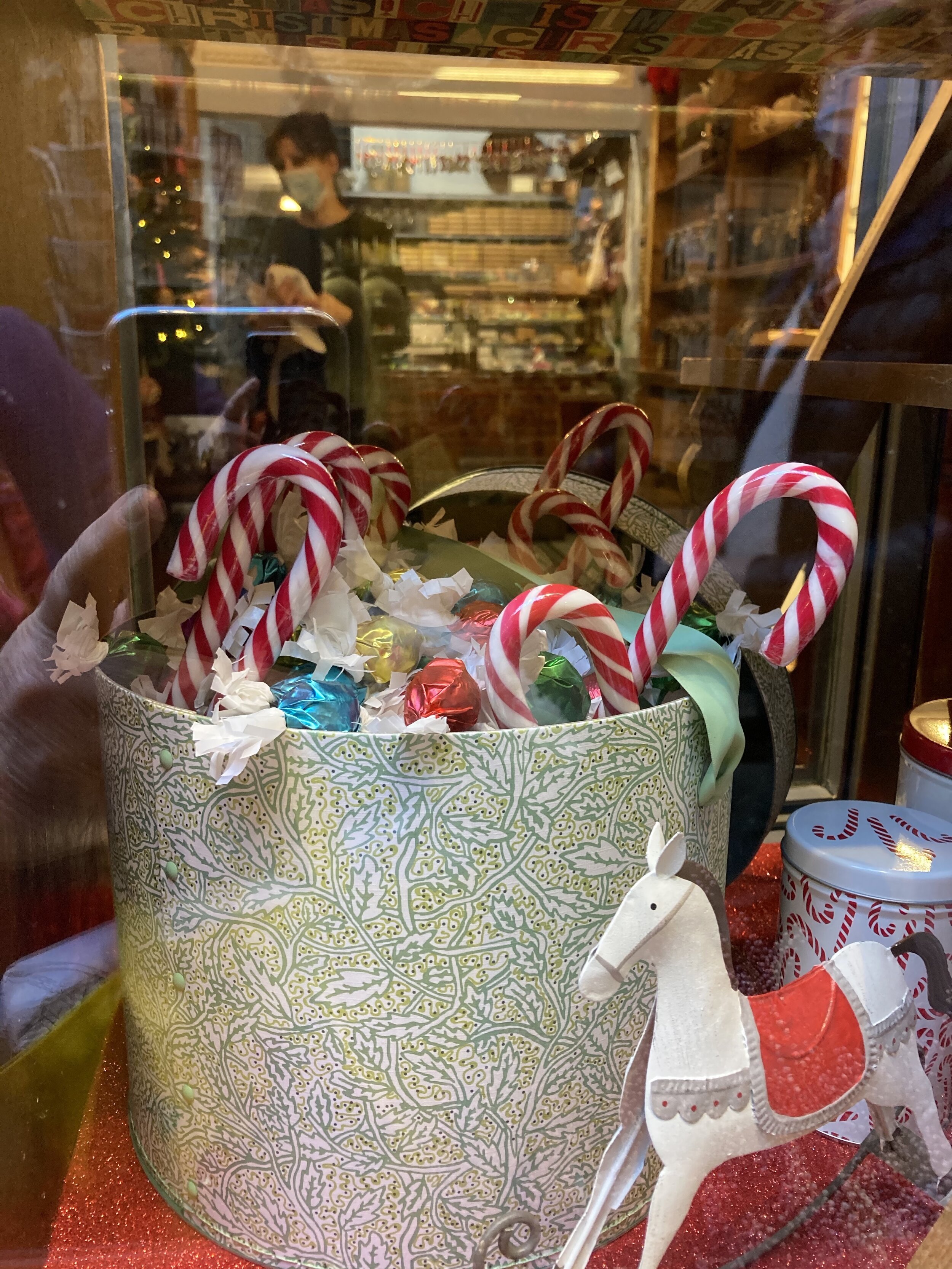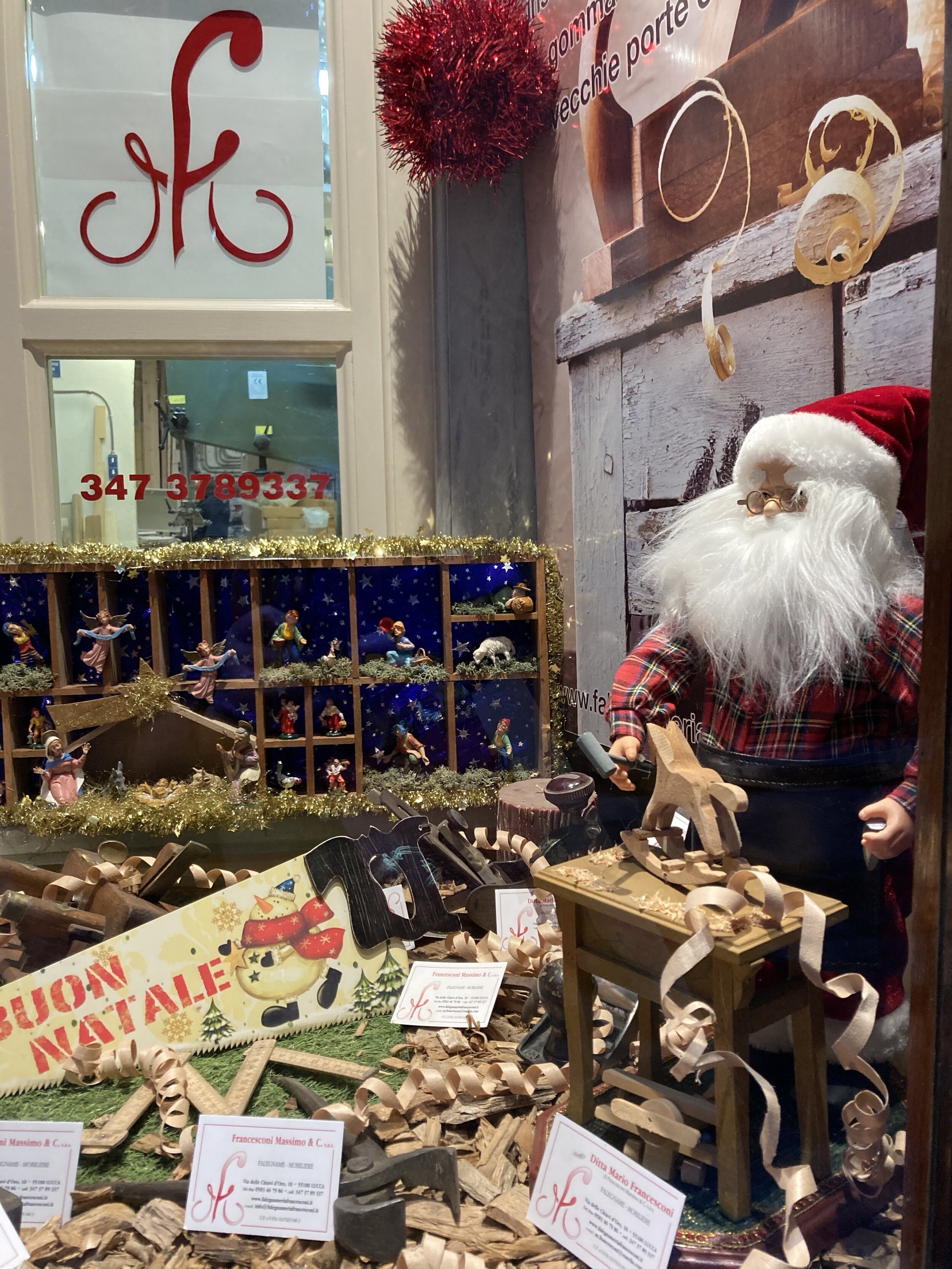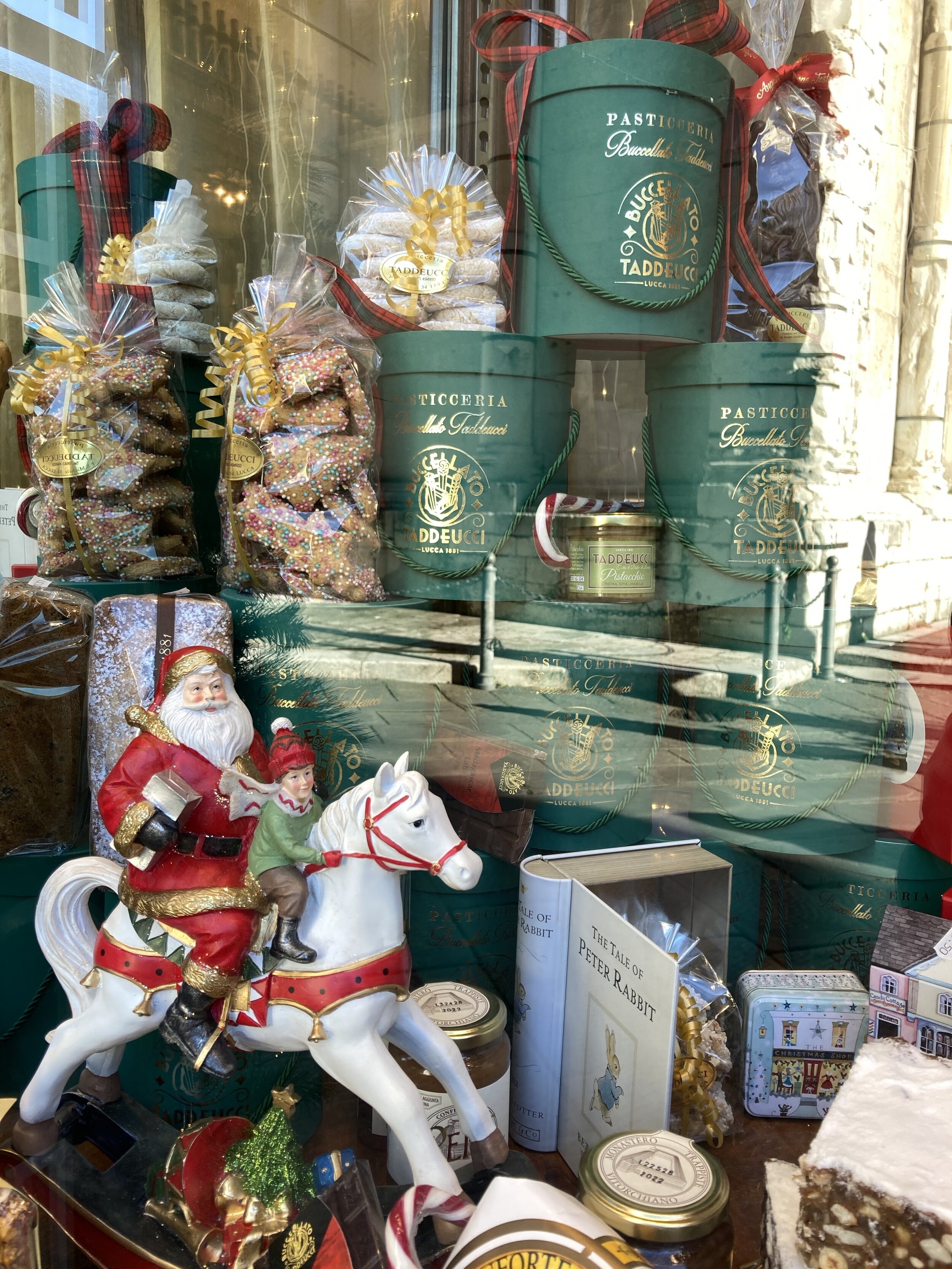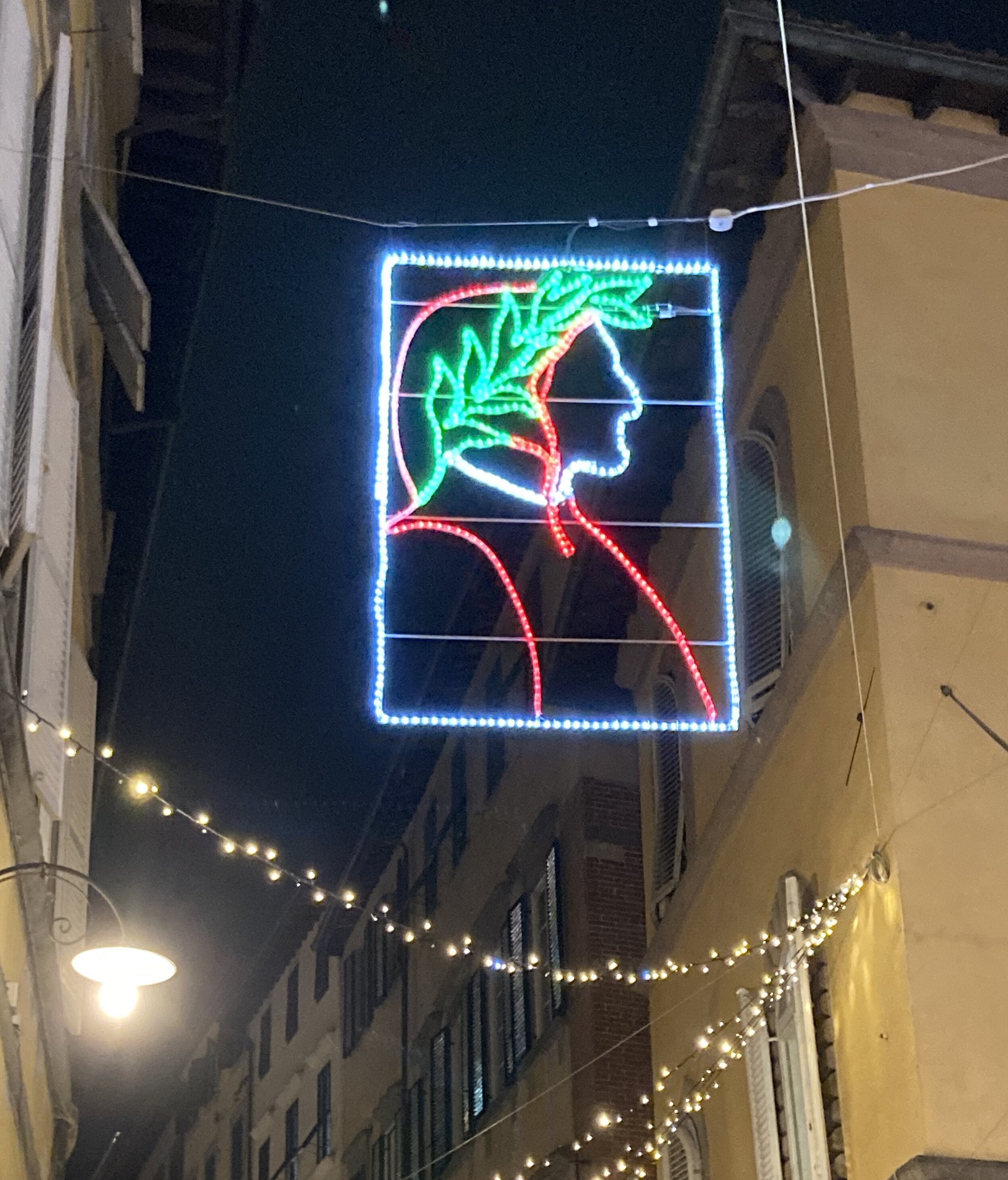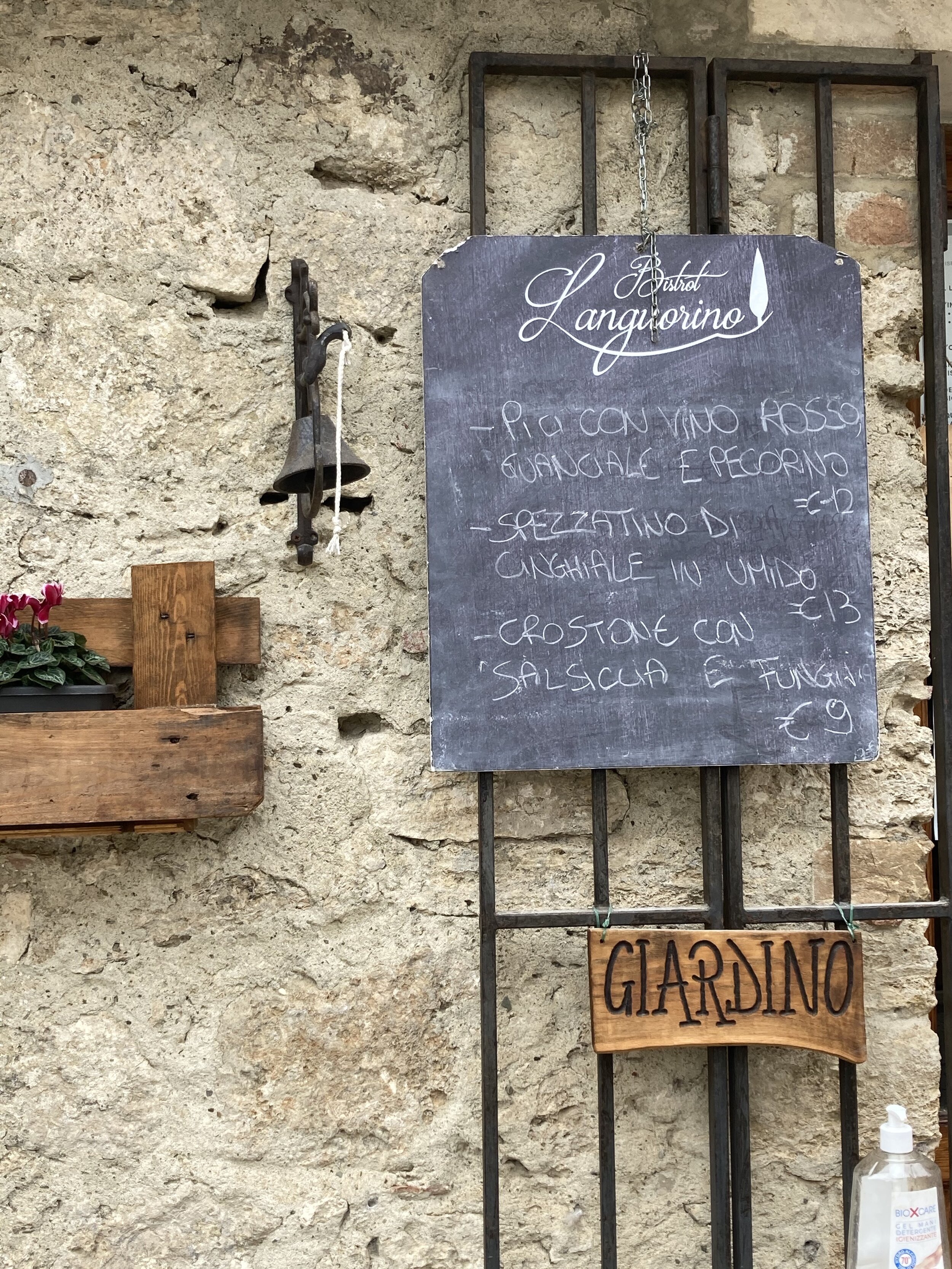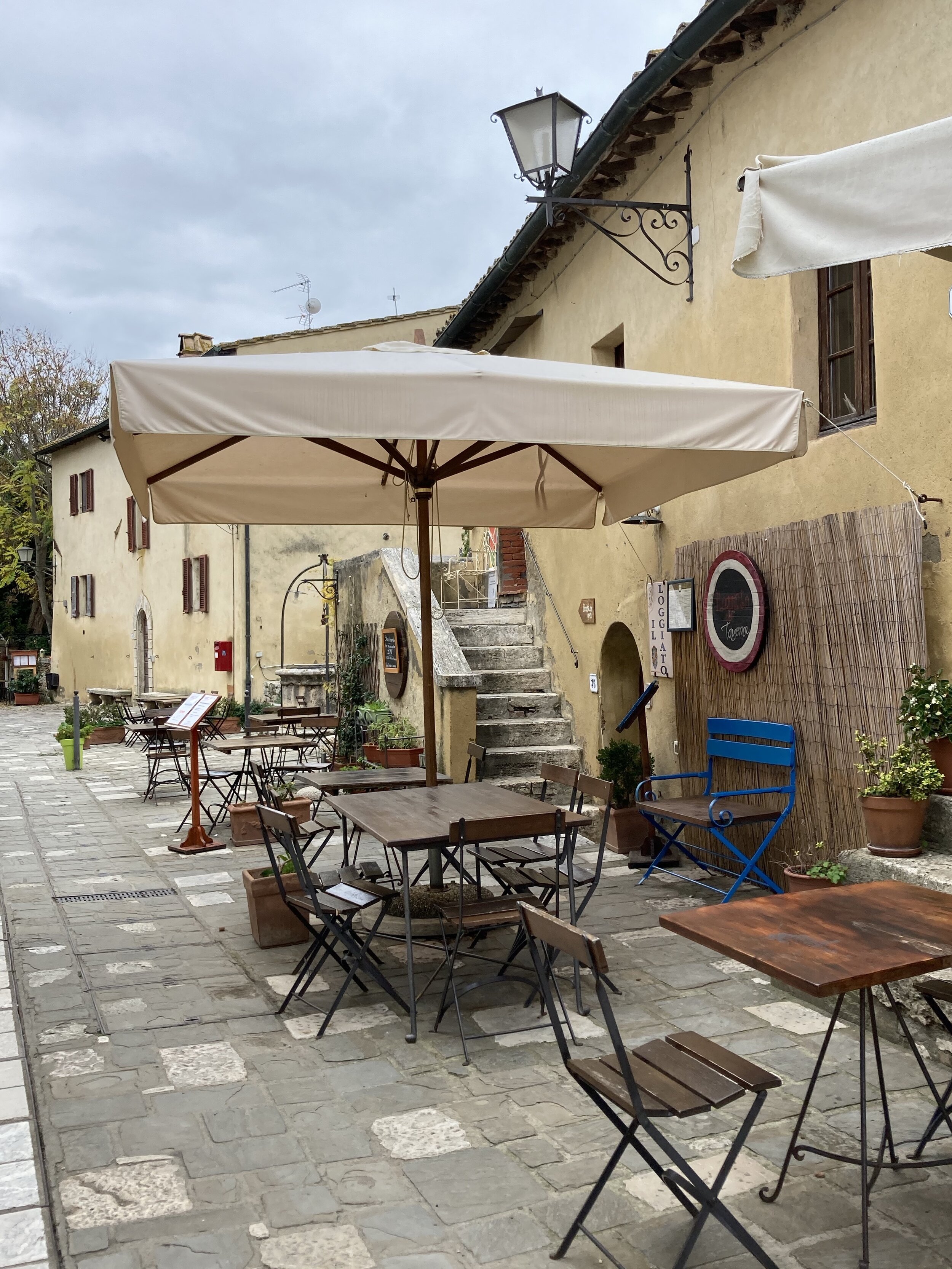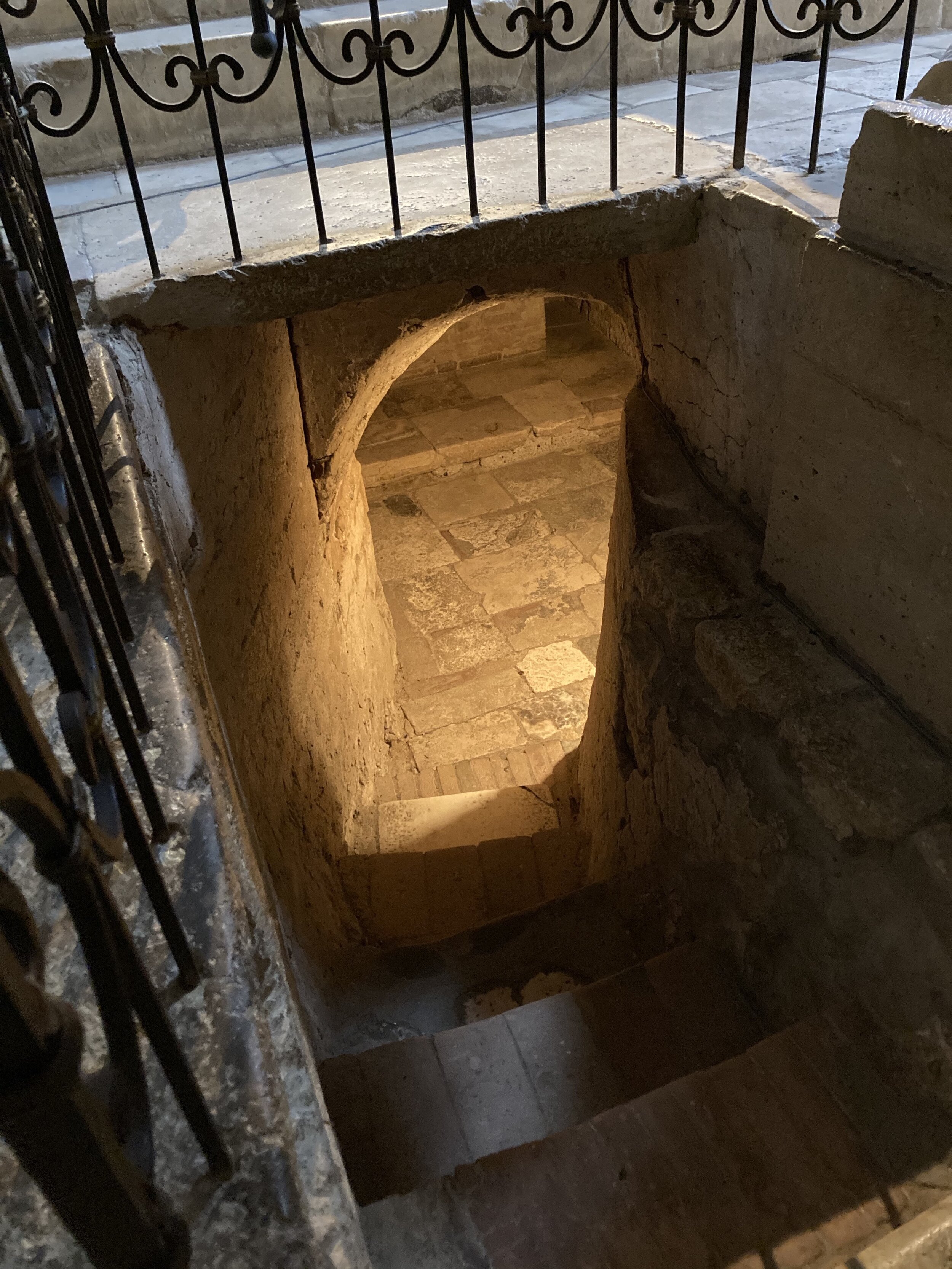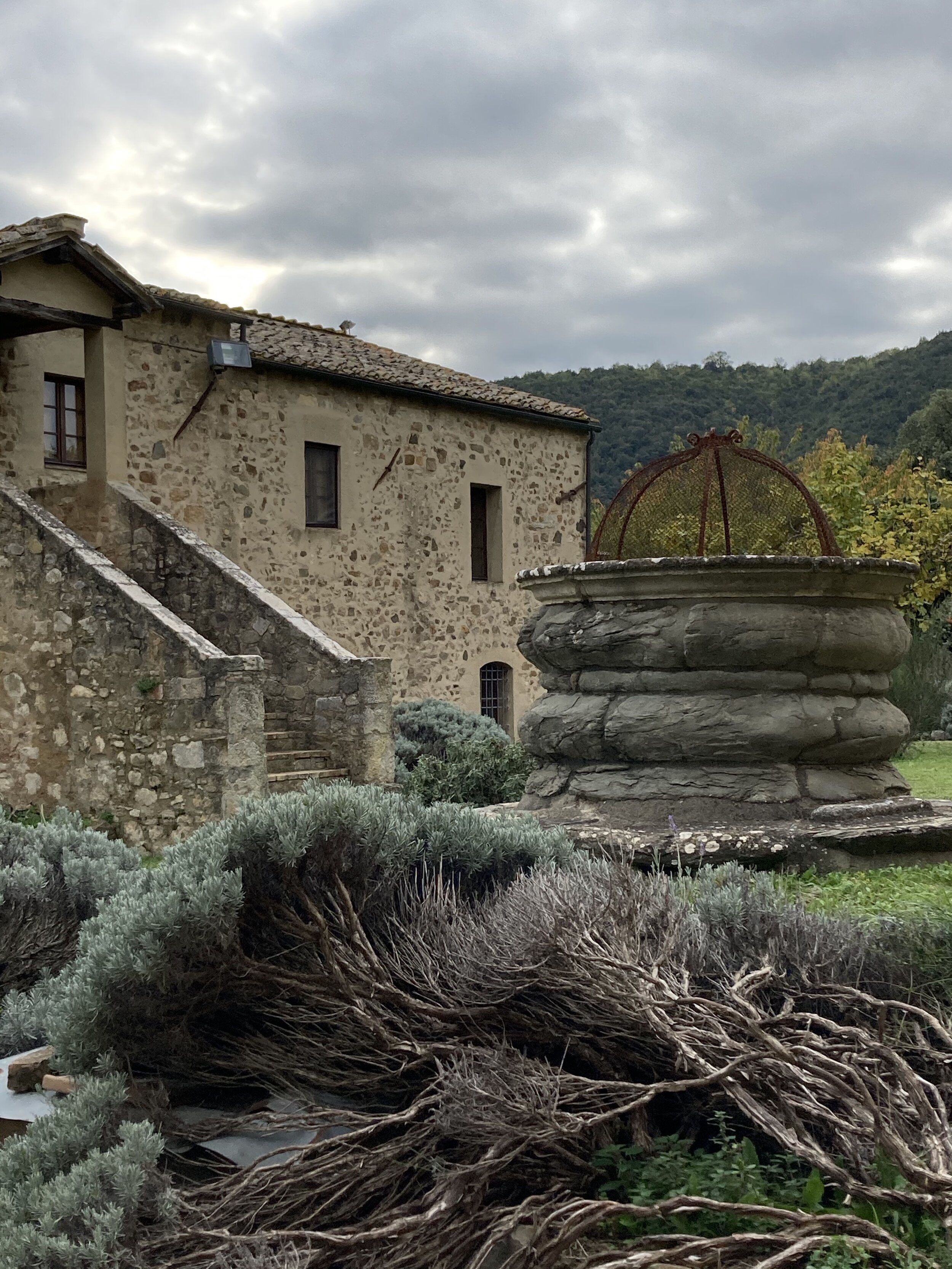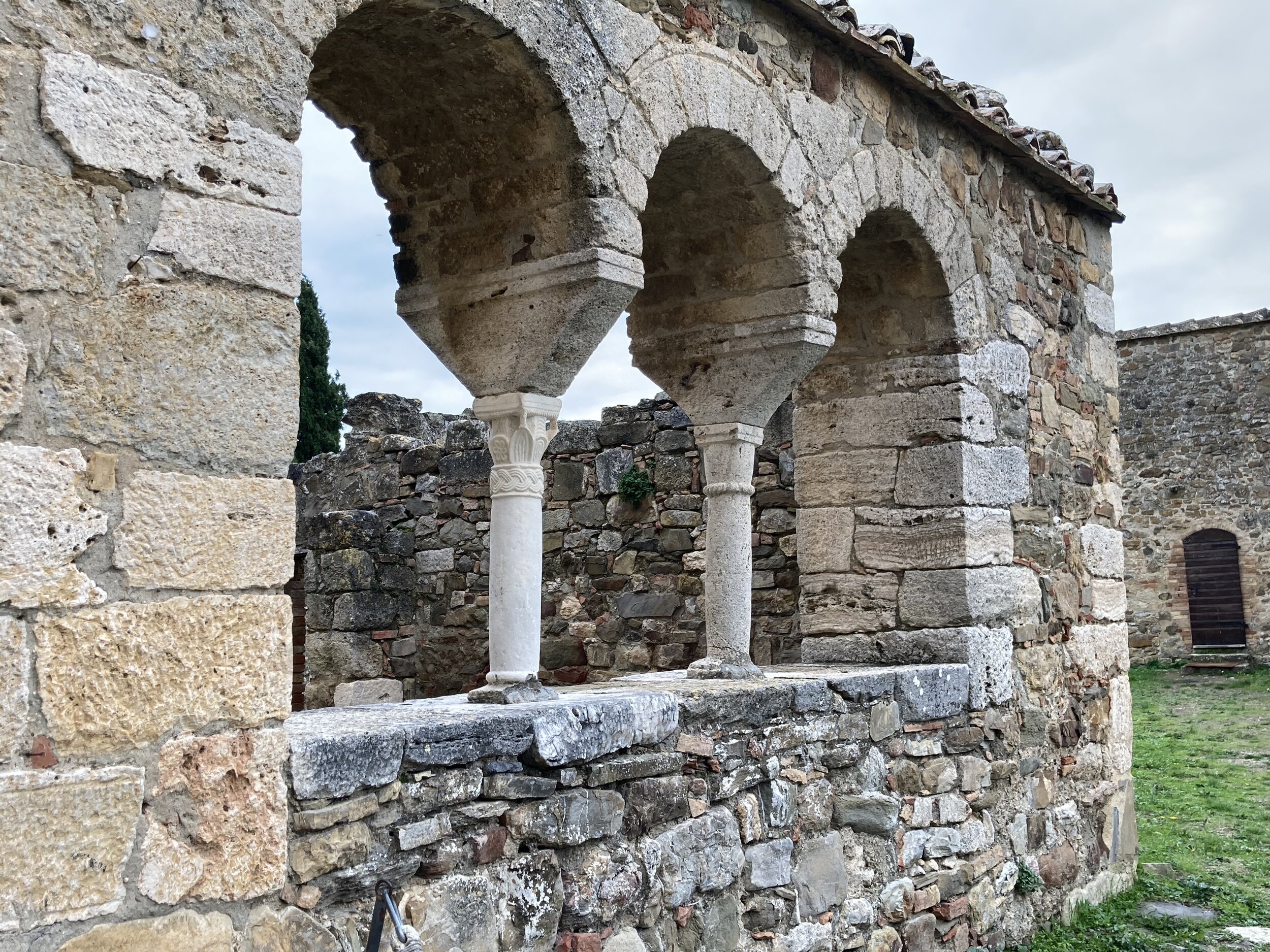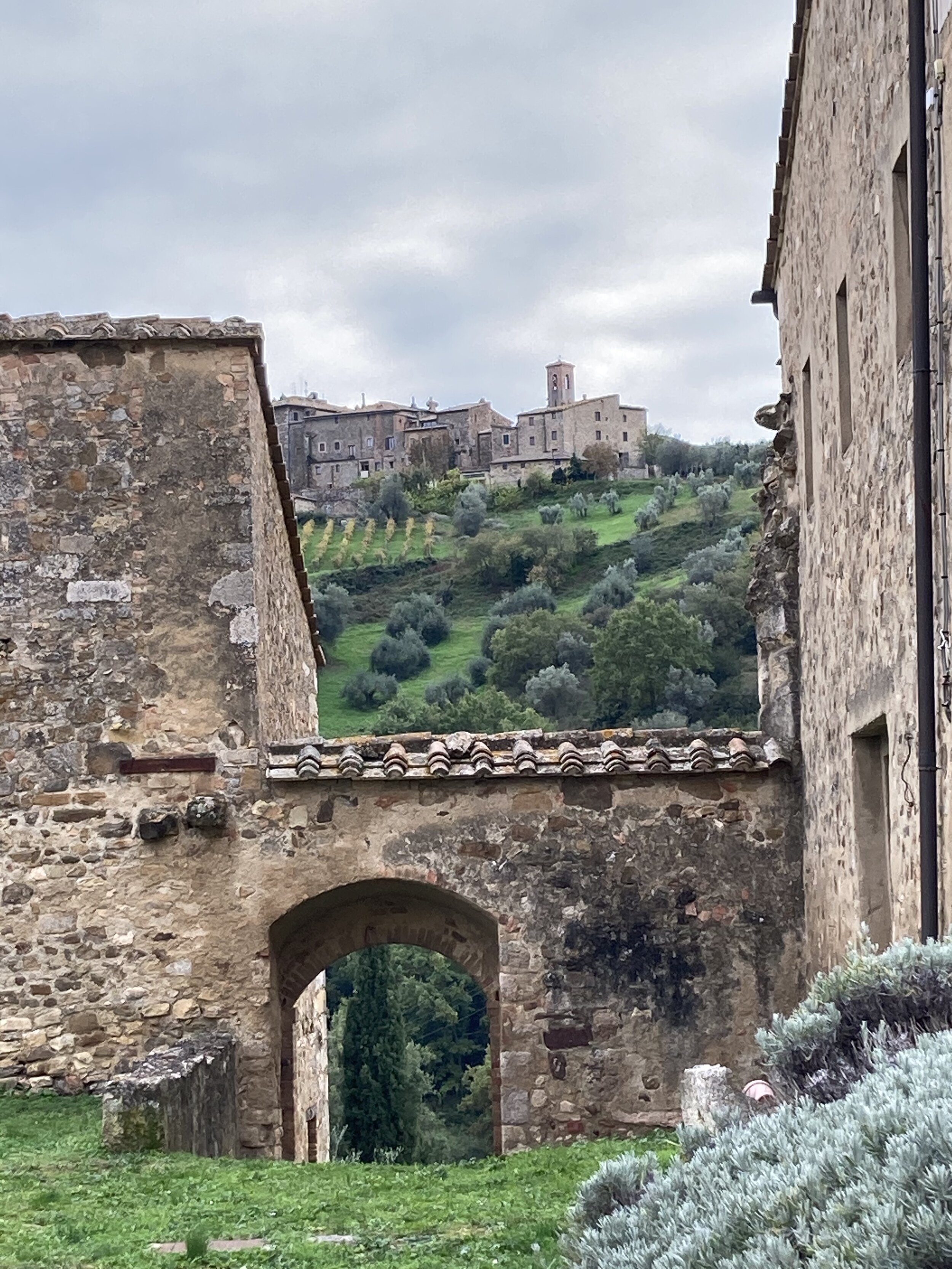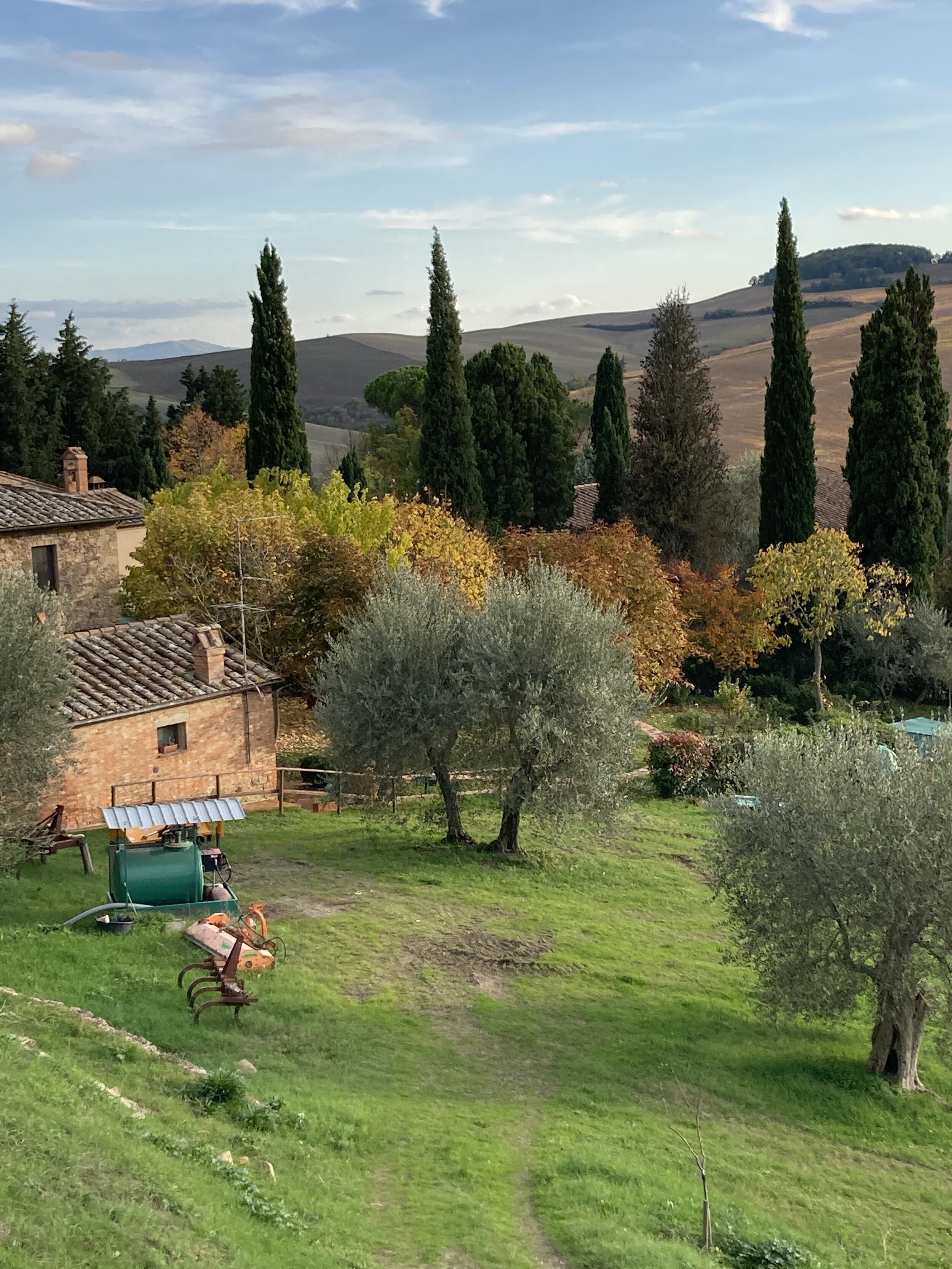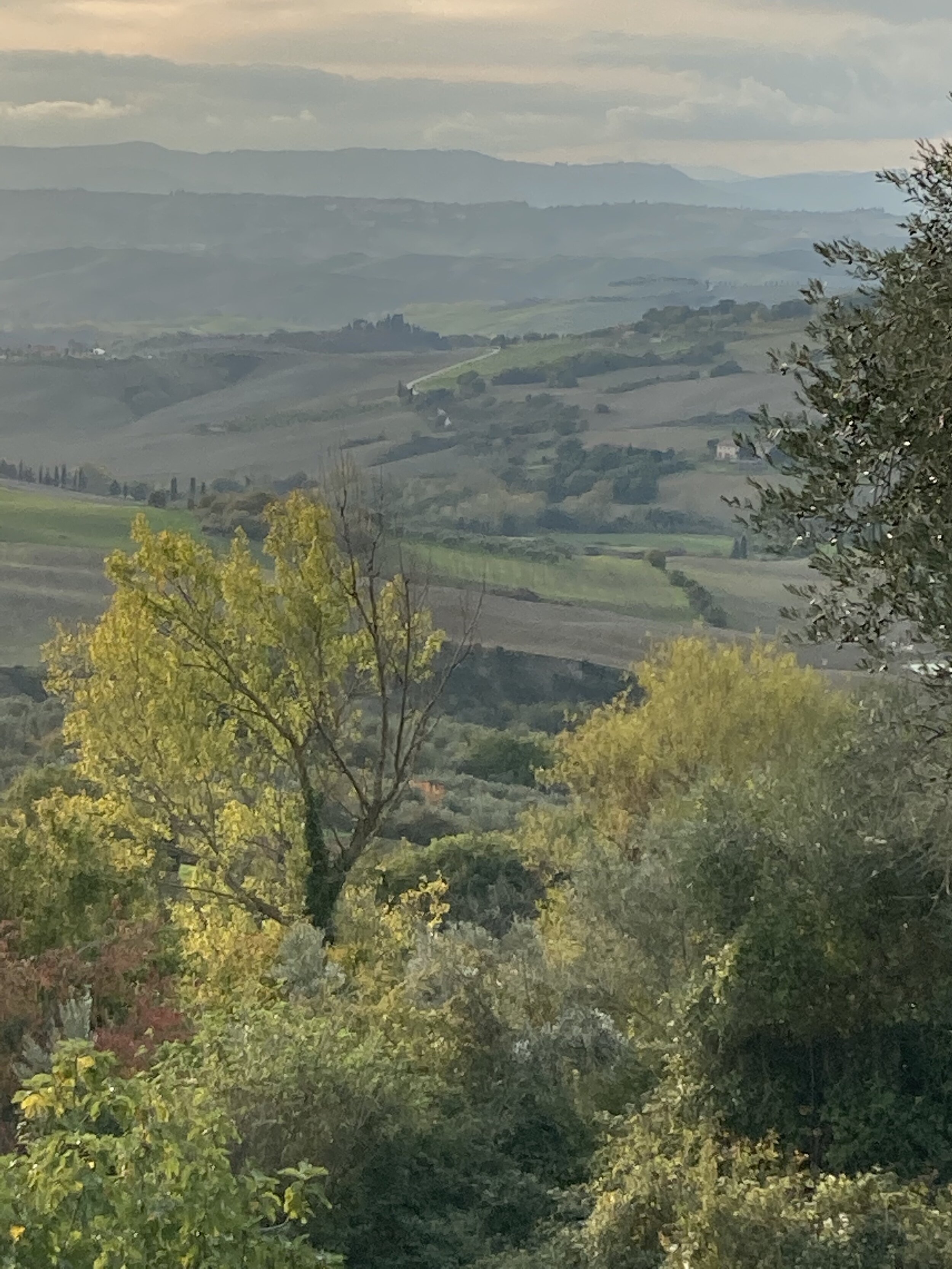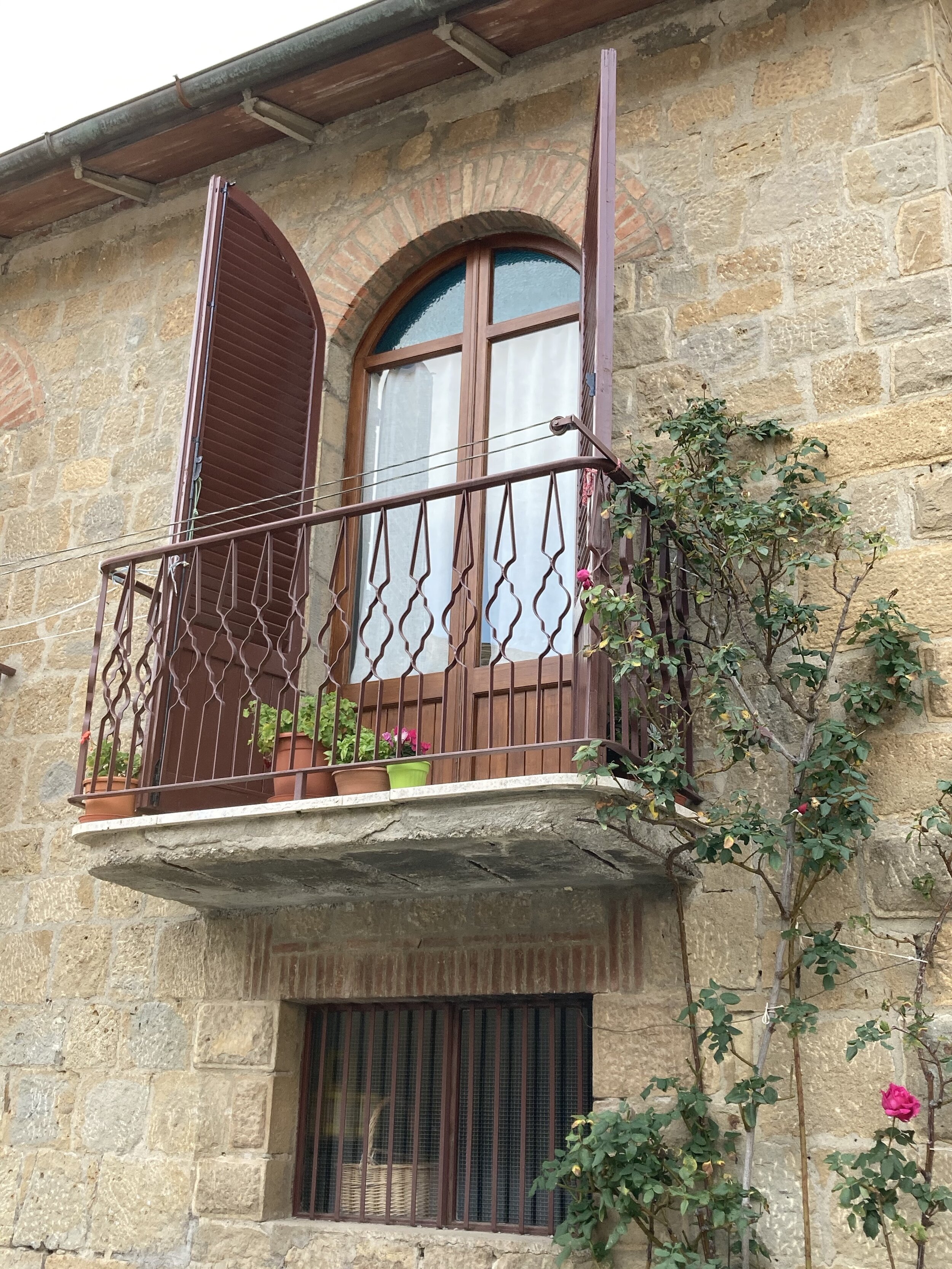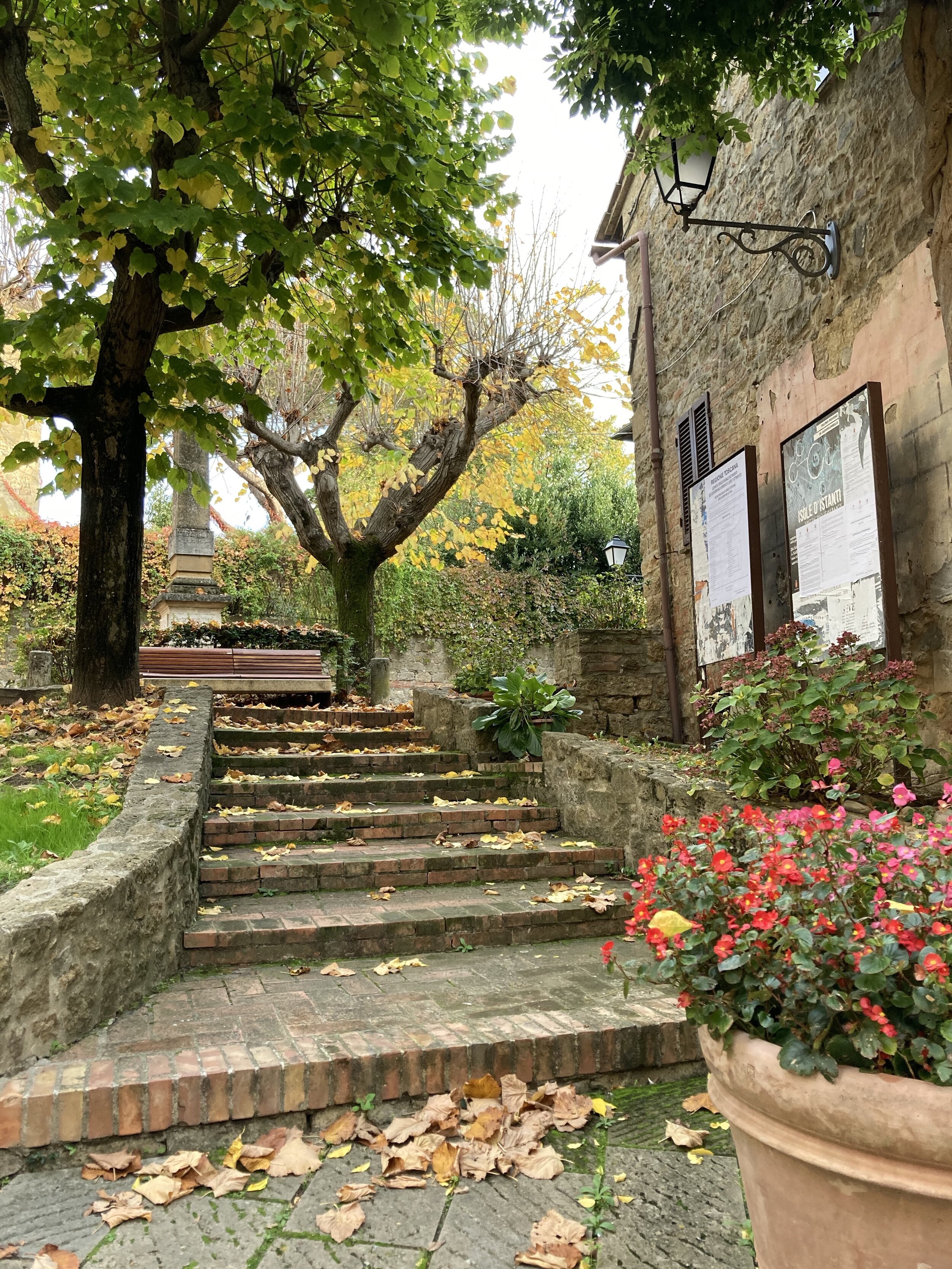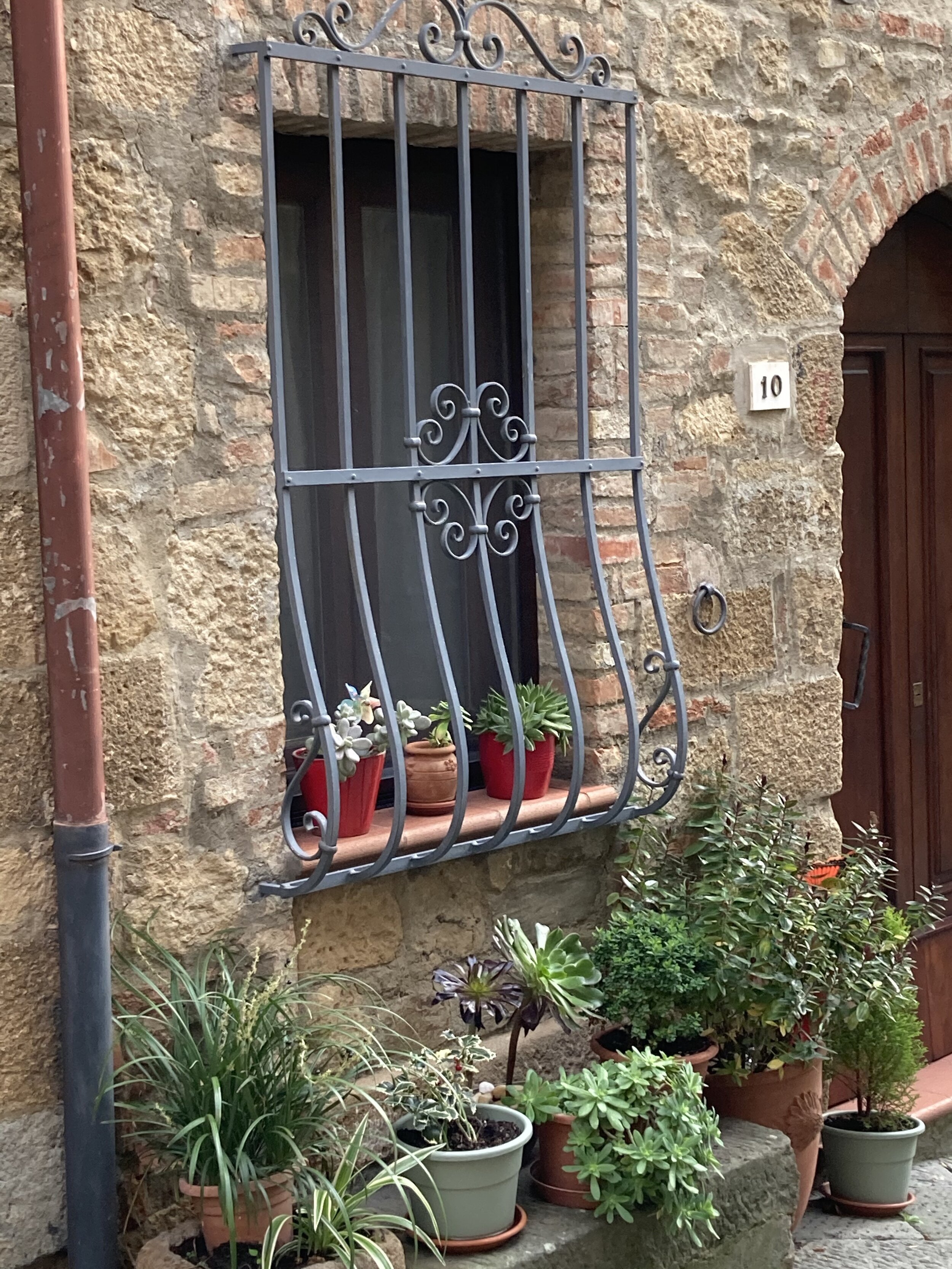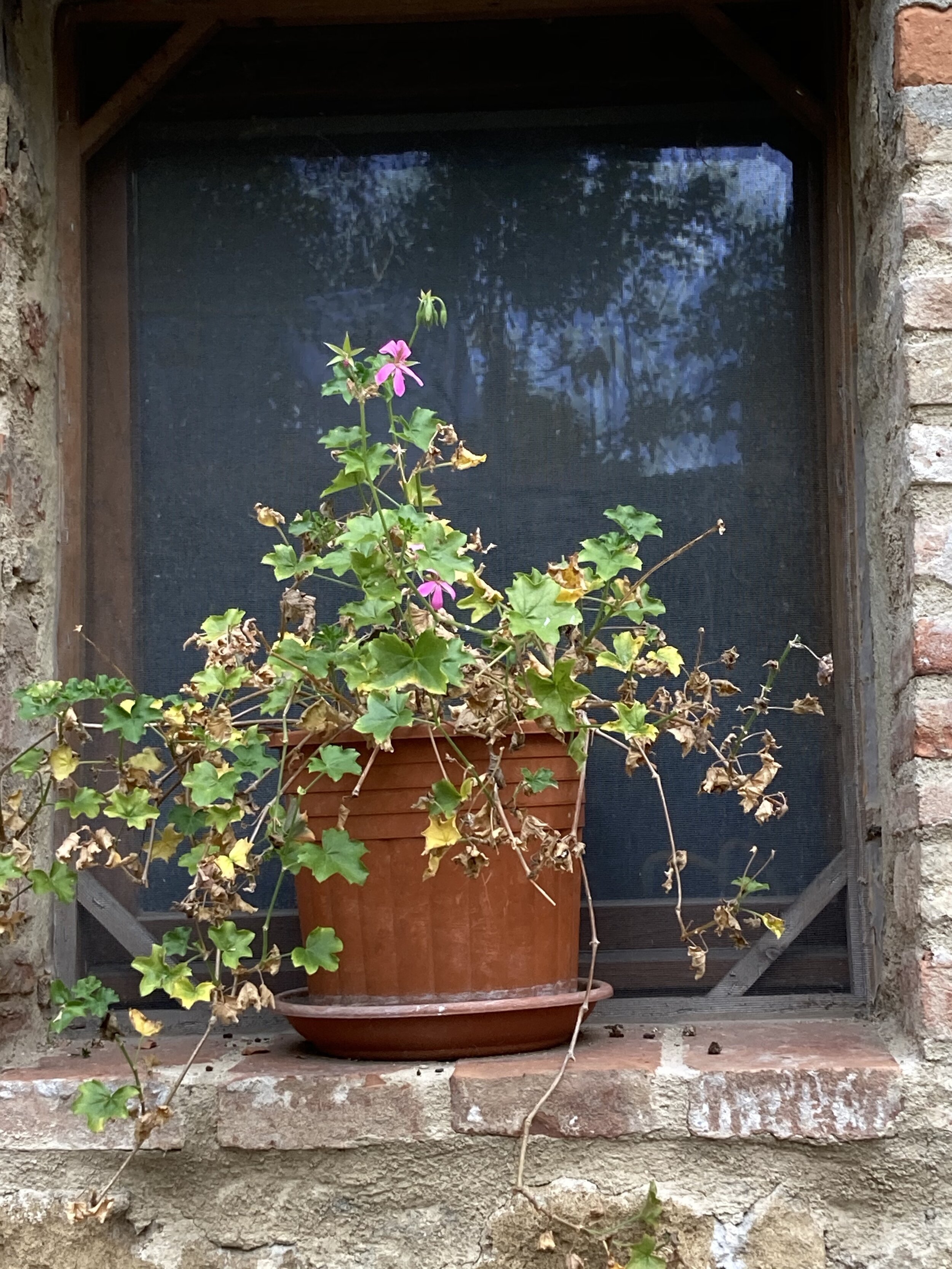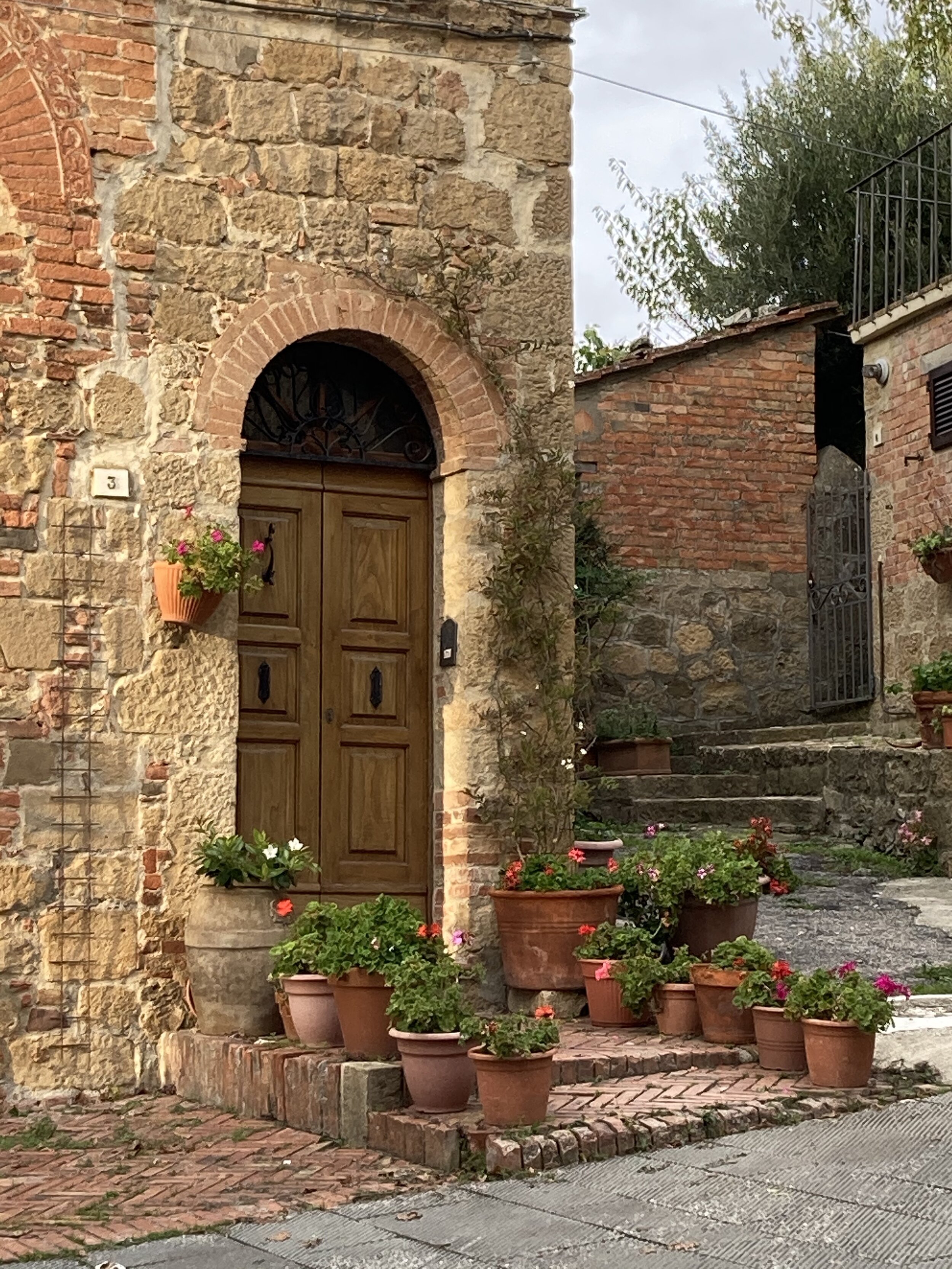Christmas in Italy 2020
In the weeks leading up to Christmas, Lucca remained stubbornly in the Orange Zone of Covid restrictions. Shops were open, but restaurants and cafes stayed closed except for “to-go” food and drink. It also meant no trips to nearby cities to marvel at the decorations (how I miss seeing Florence at Christmas).
Via Sant’Andrea, Lucca looking very festive with the Torre Guinigi in the distance
Mild weather and a few days of being in the yellow zone made it possible to enjoy a holiday coffee with a friend
And then, a small Christmas gift. For 4 short days before Christmas, Dec 20 - 23, Tuscany became a yellow zone. Overnight cafes reopened and the piazzas and city streets once again seemed lively. This of course was a mixed blessing. It was a delight to sit in a cafe and sip a cappuccino with a friend, but the temptation to let down one’s guard also became a little more challenging.
With fears that holiday gatherings would lead to an increase in COVID spread, those 4 days came to an end on Christmas Eve as all of Italy was placed back into the red zone - maximum restrictions.
But that did not stop Lucca from displaying holiday spirit. The piazzas and main streets of the historic center are strung with lights, including those wonderful words from Dante pictured in last week’s post.
Piazza Anfiteatro, Lucca. Christmas 2020
Doorways are decorated on homes throughout town. Shop windows are full of holiday treats and Christmas trees have appeared in piazzas.
The always charming Chiasso Barletti is once again the prettiest little alley in town. It’s also one of the best places to buy gifts with its artisan shops (think chocolate, ceramics, jewelry, hats) and Etta’s - the most wonderful English language bookstore.
Even though our holiday get togethers are limited this year (if not discouraged all together) it is still possible to wander the streets, gaze into windows, stroll down red-carpeted alleys filled with little Christmas trees, pop into churches to see the presepe (nativity scenes), and to enjoy the decorated doorways.
San Michele Church, Lucca at Christmas
And because the holiday season here lasts all the way to Epiphany on January 6th, the day when Old Befana arrives with gifts of socks and candy, there is still plenty of time to enjoy the festivities. Buon Feste!
